Disney returns to the basics with the terrific 2D movie Winnie the Pooh, which is inspired by five classic stories by A. A. Milne.
In this day and age, when everyone is trying to jump on the 3-D, CG animation bandwagon, you’ve got to admire Disney for sticking to its guns and supporting a beautiful, traditionally animated venture. Thanks to the vision and leadership of Bob Iger and John Lasseter, the studio is going against the tide with this summer’s theatrical gem, Winnie the Pooh, a gentle retelling of five classic stories by beloved children’s author A. A. Milne. Directed by Stephen Anderson (Meet the Robinsons) and Don Hall, the movie also features the talents of Disney legend Burny Mattinson, who worked on the short Winnie the Pooh and Tigger Too (1974) and The Many Adventures of Winnie the Pooh (1977), as head of story.

Anderson tells us that it all began with a call from Disney/Pixar CCO Lasseter back in November of 2008, who told them that the company was looking to bring Winnie the Pooh back to the screen for today’s audiences. Hall says his first reaction to the news was,
“Wow, this has been done many times before, so what are we going to bring to it that’s fresh and original?,”
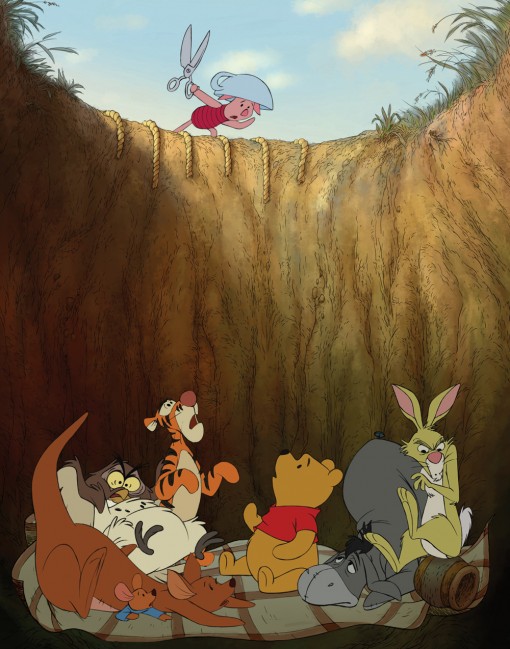
but the director was happy to find out that the mandate was to take the property back to its roots, when the Nine Old Men worked on it at Disney.
One of the first things the co-directors did was to revisit the Milne stories and read them cover to cover. “Stephen had read them as a kid, but they were all new to me,” says Hall, who also worked on Disney’s Princess and the Frog, Meet the Robinsons, Brother Bear and Tarzan.
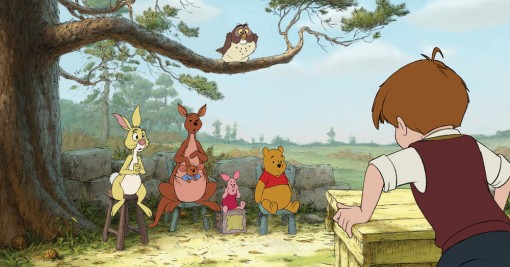
“I was very impressed by how witty and funny they were, and although they were written the 1920s, there’s nothing dated about the humor, the situations nor the characters.”
Anderson, who also directed Disney’s CG-animated feature Meet the Robinsons, tells us that he and his team knew from the start that they had to stay true to the property’s classic, hand-drawn roots.
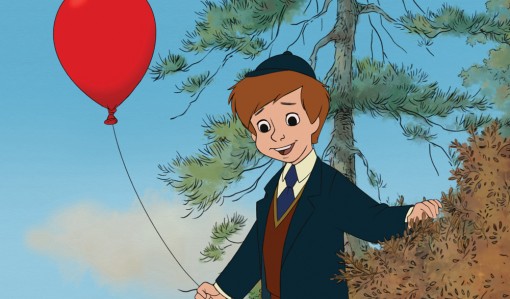
“We knew that we had to do justice to the book’s beautiful illustrations by Ernest Shepard. The shorts were done using the Xerox method and these loose illustrative, sketchy pencil lines against those lush watercolor backgrounds. We really respected that. You always want to find the right tool to tell your story and the story will always dictate the way you tell it.”
To kick-start Pooh’s latest big-screen adventure, the team pulled five stand-alone stories that seemed relatively fresh and could be presented in a nice 69-minute package. Anderson and Hall were also lucky to have Mattinson on board, who served as the project’s Pooh guru. In fact, it was Mattinson’s brilliant five-minute pitch of the sequence in which Eeyore loses his tail that won all the Disney execs over and got the greenlight to move forward with the project as a full-fledged movie instead of a shorter featurette.
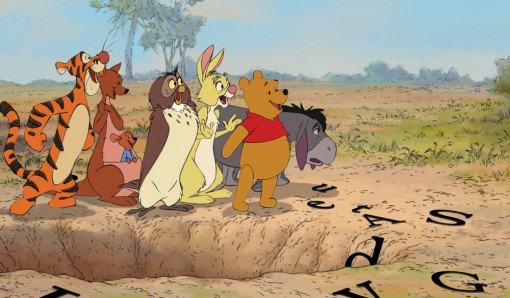
In addition to secret weapon Mattinson, the production also relies on many of the studio’s talented veteran artists, many of whom worked on the 2009 2D fairy tale The Princess and the Frog: Mark Henn (Winnie the Pooh and Christopher Robin), Eric Goldberg (Rabbit), Andreas Deja (Tigger), Bruce Smith (Kanga, Roo, Piglet), Dale Baer (Owl) and Randy Haycock (Eeyore) are some of the film’s top-notch supervising animators who brought years of experience to the film and each added their own personal touches to the characters. We should also note that the voice cast is also quite remarkable, led by Jim Cummings as both Pooh and Tigger, Craig Ferguson as Owl, Tom Kenny as Rabbit, Bud Luckey as Eeyore, Travis Oates as Piglet and John Cleese as the Narrator.
“Early on we talked about the challenges of taking on such a huge franchise, but that concern quickly turned into excitement because all of us love these characters so much,” notes Anderson. “It was such an honor for everyone to bring them back to the screen, that we all tried really hard to get the maximum amount of comedy out of each character and situation. That’s why this property has withstood the test of time, because audiences see these familiar characters as friends they can go back to again.”
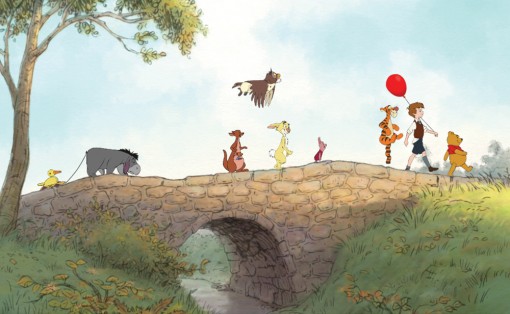
According to Hall, because the characters were so well-defined the team didn’t need to spend as much time fleshing them out and setting up plot mechanics as they would do with a new, original property.
“We have this great cast of characters, so we were able to deal with pure entertainment, not the usual plot mechanics.”
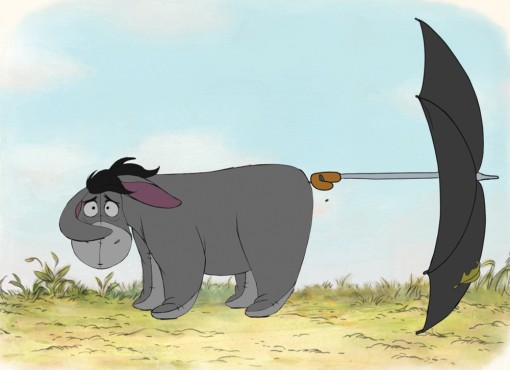
For Anderson, working with the legendary Mattinson was one of the most amazing aspects of his experience.
“It was such a blast to work with Burny,” says the director. “I had seen and talked to him at the studio, but this was the first project that I was working with Burny. He has directed some of my favorite Disney films of all time—The Great Mouse Detective and A Mickey Mouse Christmas—so I had to pinch myself during story meetings. Here he was sitting right next to me and brainstorming with us. He considered me a colleague, and that meant a lot to me.” In fact, the directors recall that it was the veteran artist who kept pushing the boundaries. “We had a lot of rookie artists straight out of our training program on the story crew,” explains Hall. “The funny thing is that the newcomers were very conservative and reverent, while it was Burny who wanted to push the boundaries and was opting for whatever worked best for the laughs.”
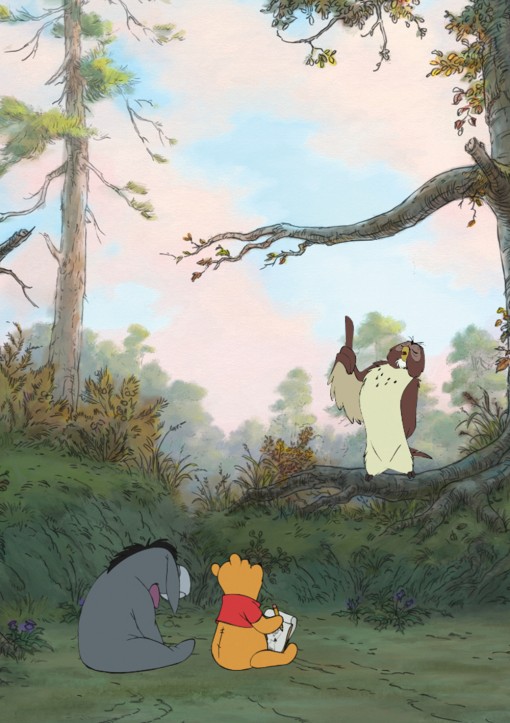
The design team did a lot of work to come up with the right visual cue for the project. They traveled to England and spent several days in Ashdown Forest in East Sussex, which was the inspiration for Milne’s Hundred-Acre Wood. They took thousands of photos, sketched and painted hundreds of watercolors. They also analyzed some of the original Shepard sketches from libraries and museums to honor the roots of the stories. They also went back to the old model sheets from the old Pooh shorts.
“For Winnie the Pooh, we referenced Hal King’s model from The Honey Tree (1966),” says Anderson. “We really like King’s design and Mark Henn spring-boarded his version based on that model.”
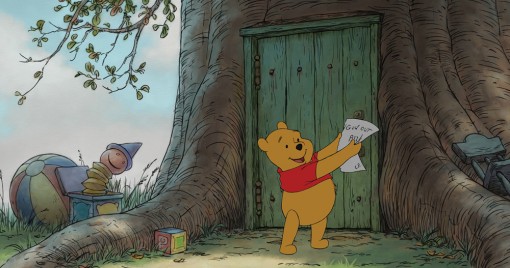
Anderson and Hall both point out that they would feel less confident in their labor of love if the movie had been a full-on CG-animated project. “We are very comfortable in this medium, regardless of all the other movies that are coming out this summer,” notes Anderson.
“If this were a fully CG-animated and rendered and lit Pooh, it just wouldn’t feel right. We would be doing the characters a real disservice. We feel like rebels because we’re doing what most studios aren’t touching right now.”
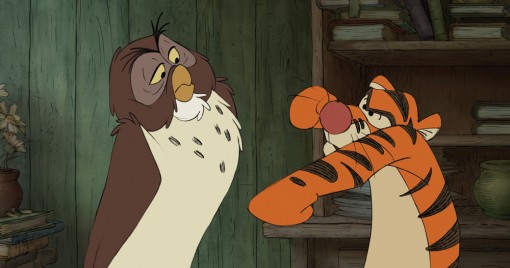
Hall is surprised by the way the general media tends to equate hand-drawn with old-fashioned.
“We just laugh at that notion,” he stresses. “I don’t think kids have a preference. The medium isn’t as important to them as are the story and characters. I certainly hope that we will always have a hand-drawn tradition at Disney, alongside the CG. They don’t have to compete with each other. Hand-drawn never has to be as realistic as CG, so you can take a more artistic path. It can offer artistic alternatives that CG can’t right now.”
How can anyone not cheer Anderson and his team when he says,
“In this summer of huge 3-D epics and sequels, it’s kind of exciting to do a little 2D movie about a stuffed bear—we say, let’s bring it on!”
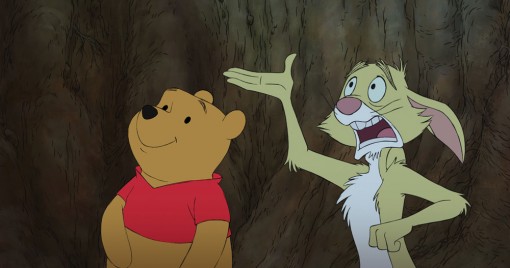
Disney releases Winnie the Pooh in U.S. theaters on July 15. The movie opened in the U.K. and several other key European territories in April.



 Win a Funko X Lilo & Stitch Prize Pack!
Win a Funko X Lilo & Stitch Prize Pack! 
